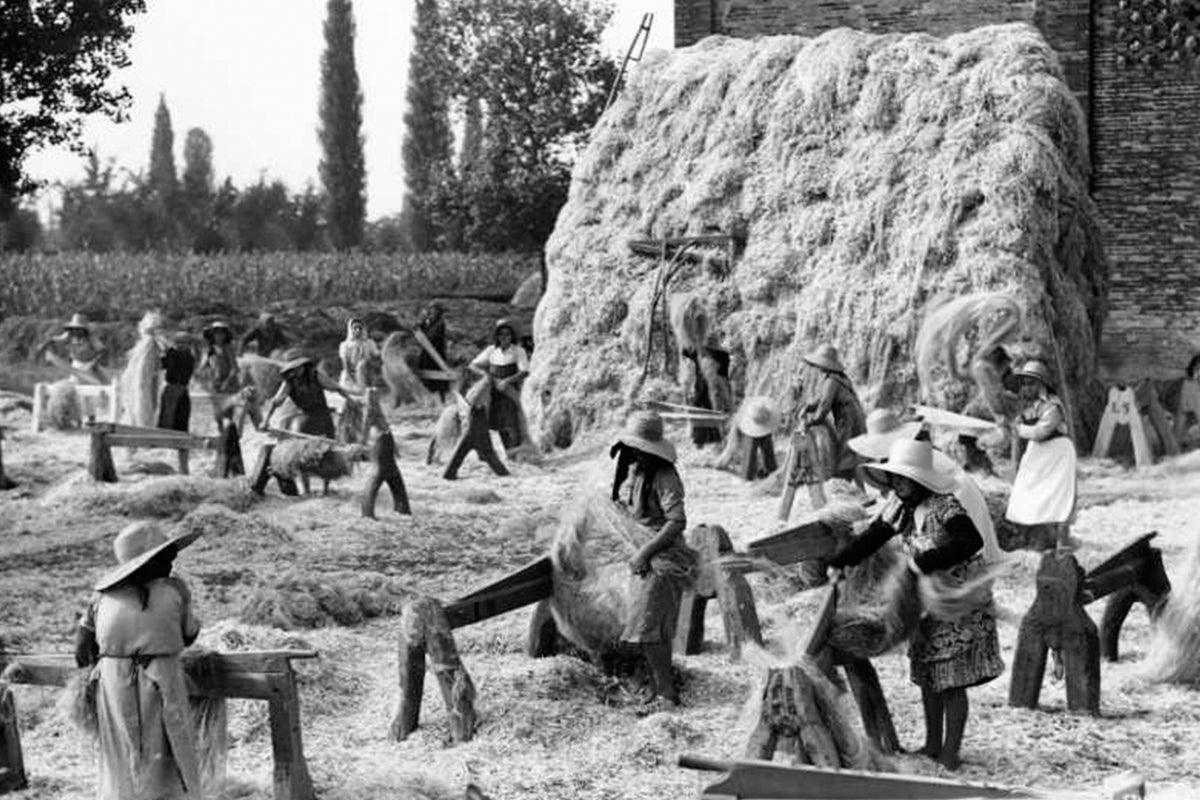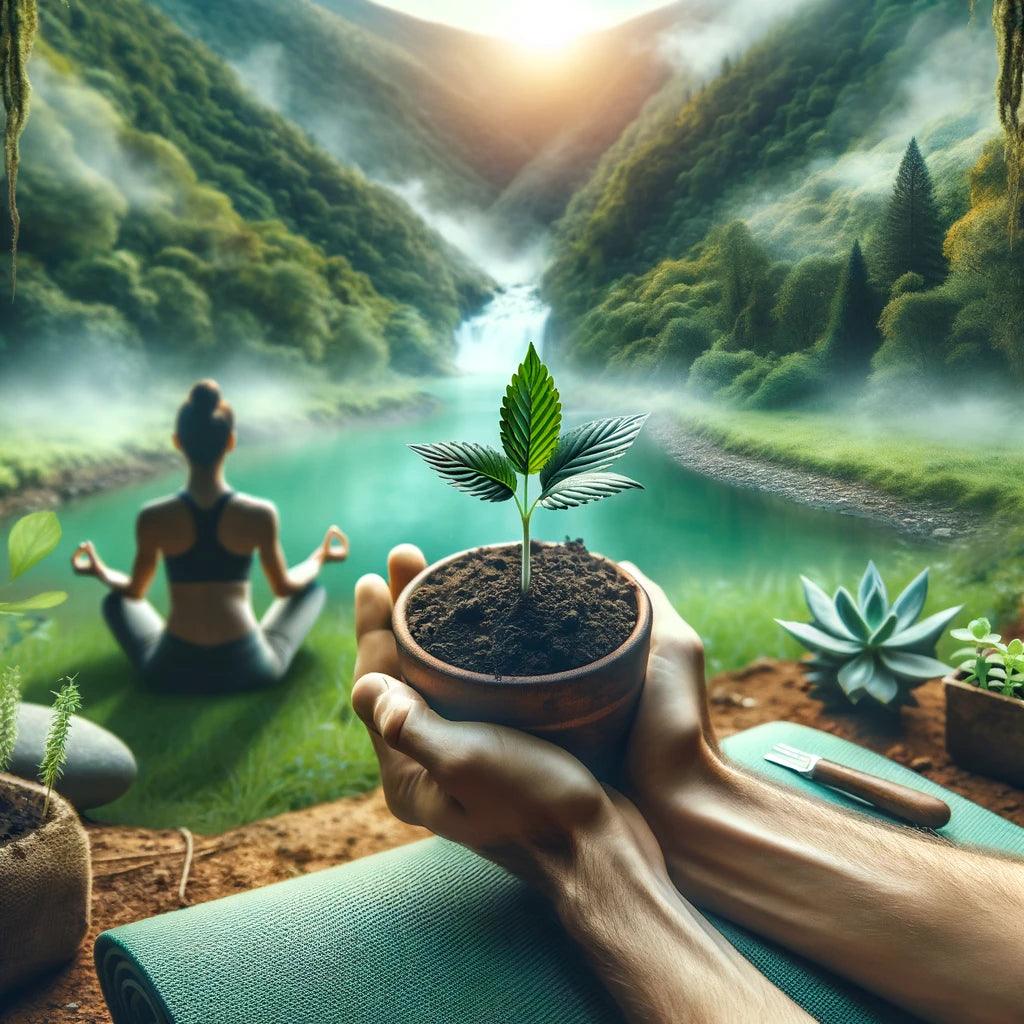In this article we will talk about the origins of cannabis, its history and its traditions that have spread over the years throughout the world. Where does cannabis originate from? What have been its uses in the past? Read the whole article to find out how man's interest in this plant was born and how it spread across the planet. Specifically we will tell you:
- First uses of cannabis
- Cannabis and mysticism
- Spread of cannabis
- Cannabis for industrial uses
- Cannabis and prohibitionism
Let's imagine man at the origins of his history, when agriculture did not yet exist and all his activity consisted of hunting animals and gathering the fruits that the earth spontaneously provided. It is very easy to think that in this wild world cannabis was already present in human life.
First uses of Cannabis
Perhaps they used it to make rope, perhaps they ate it, perhaps they already knew the psychotropic effects induced by its intake. What is certain is that traces of its presence have been found in the most ancient archaeological finds. And we're talking about ten thousand years ago . Imprints of hemp fiber on pottery, human bodies buried next to cannabis seeds or other parts of the plant, fragments of clothing: everything suggests that its use has been widespread everywhere since the dawn of time.
A versatile plant with many possible uses, it is indicated in ancient official documents for its healing properties . From ancient Chinese medicine to Zoroastrian culture , passing through the sacred texts of the Hindu religion , the most ancient treatises of Ayurvedic medicine , the Egyptian papyri and the Assyrian tablets . Cannabis is never missing from the lists of plants useful for the health of the body and spirit.
It is referred to (thanks to its active ingredients) as a " plant that releases anxiety ", an " antidepressant " substance, a powerful anesthetic against pain , or a simple " remedy ". There is also no lack of indication of its use as a psychotropic substance, useful in the search for enlightenment, an expansion of one's state of consciousness, a reunion with the divine.
Cannabis and mysticism
In the Vedas , the sacred texts of the Hindu religion dating back more than three thousand years, cannabis is mentioned as one of the five sacred plants. It is even said to have a sort of guardian angel in its leaves . It is indicated as a "source of happiness, joy and liberation", administered to people "to delight the senses and eliminate fears".
The use of cannabis in ancient times , however, is not, as one might think, attributable only to the mystical Middle East. Herodotus , the father of Western historiography, who lived in Greece in the 5th century BC, also talks to us about cannabis; in his Stories he tells us about the habits and customs of the Shiite people, a nomadic population of Caucasian Asia. In particular it describes a purification ceremony performed after the burial of a king:
“[…] They raise three poles, inclined towards each other, and spread felt blankets over them, which they join together as tightly as possible. Then, in a vase placed in the center of the poles and blankets, they place stones red-hot from the fire. […]
The Shiites therefore take the seed of this hemp and, having entered under the covers, throw it on the stones red-hot in the fire. Then the seed releases an odorous smoke and produces such steam that no Greek stove could do the same; inebriated by this sauna, the Shiites shout with joy."
Spread of Cannabis
We can therefore think that the cultivation and use of hemp for industrial, medical, religious and recreational use originated in the East but then also spread to the Western world. We find traces of it in Roman civilization in the 1st century AD when Dioscorides , a Greek doctor, botanist and pharmacist who lived in Rome at the time of Nero, included cannabis in his famous herbarium. A century later we find it cited by Galen , the most famous doctor of imperial Rome, who exalts its use to "stimulate pleasure" , and recommends it as a painkiller .
In present-day Great Britain, even before the arrival of the Romans, cannabis was already cultivated and used by Celtic populations. In 1,000 AD the English word “ Hempe ” (hemp) was written in a dictionary for the first time. The cultivation and use of hemp were therefore widespread in Europe throughout the Middle Ages for various uses.
Cannabis for industrial uses
It became a strategic product for the maritime republics , the mooring ropes and sails were made of hemp. The use of hemp for navigation made the fortune of the rich Bolognese landowners who grew hemp on their lands. Hemp becomes one of the main raw materials for construction . The people of Bologna will be the main suppliers first to the Serenissima and then to the English Navy.
It is precisely in Emilia that this type of cultivation spreads most and traces of it still remain today in the area, dotted with small artificial lakes. Which can be found scattered in the "lower Bolognese area" . These places were called maceri , in which the plants were immersed to soften the fiber.
Cannabis and prohibitionism
Despite its countless uses and the relative simplicity of its cultivation, in the late Middle Ages cannabis began to be considered a prohibited plant. In the wake of the inquisition, the first bans spread, probably due to its psychotropic effect which must not have been completely unknown even to the men of those times. The narcotic powers attributed to the hemp plant therefore led the Church to take an official position: in 1484, Pope Innocent VIII issued a papal bull prohibiting its use by the faithful.
Hemp is defined as a demonic means through which one can experience mystical experiences outside of the "divine" ones and in any case not authorized by God . Despite the ban by the Catholic world, hemp continues to be cultivated for centuries to come.
At the end of the eighteenth century, it was now widely known and used throughout the eastern and western world, with great pre-eminence in North America where it was the basis of the development of the textile industry. Most of George Washington's land was cultivated with cannabis and the American constitution was written on paper made from hemp.
Even Napoleon , who had probably used cannabis indica during the Egyptian campaign, was seduced by the pain-relieving properties of the plant and seemed very interested in its strong sedative effects. Indian hemp thus began to circulate among the counters of French pharmacies and soon spread among the Parisian bourgeois.
The effect of smoking cannabis is so appreciated that it pushed the greatest nineteenth-century poets ( Hugo, Dumas, Baudelaire and Gautier ) to create the so-called " Hashish club ", in honor of the plant, a source of inspiration. The second half of the nineteenth century is certainly the period of greatest splendor of hemp.
Not only for its multiple functions, already known for millennia, but also for the great commercial activity that derives from it. Paradoxically, it is precisely because of this economic importance that hemp is increasingly criticized . The controversial plant is taken into consideration as the cause of the madness of some murderers and, more generally, as a source of gradual mental insanity. These positions were soon transformed into law, officially defining their use and trade as illegal in many parts of the world.
In the United States the final blow came in 1937 with the Marijuana Tax Act , a legislative measure which through heavy taxation and bureaucratic complications effectively made the cultivation of hemp economically unviable. The measure was strongly supported by the then inspector of the Federal Bureau of Narcotics, Harry Anslinger , an ambitious, racist and bigoted man who motivated the restriction as follows:
“In the United States of America there are one hundred thousand marijuana smokers. Most of them are blacks, Hispanics, Filipinos and artists. Their satanic music, jazz, swing, are the result of the use of marijuana. Marijuana causes white women to desire sexual intercourse with blacks , artists, and others.”
Clearly, behind these positions there are economic interests to be protected. There is Hearst , a publishing house and paper producer which has just made enormous investments in tree paper and which will be the biggest supporter, through its newspapers, of the anti-cannabis campaign . There is DuPont , which has just patented nylon , the new textile fiber destined to largely replace natural fibres.
The disinformation and prohibitionist propaganda campaign therefore identifies cannabis as the cause of many social evils: from murderers, to communism, to pacifism, to marital infidelity, to sexual intercourse between “white women and inferior races.” Thus the possession and use of this plant with a thousand-year history becomes a crime in much of the modern world.
If the article was of interest to you, share it on social media with the rest of the Community, every single share helps us support our blog and keep you fully informed about the world of Cannabis.
You might also be interested in:









